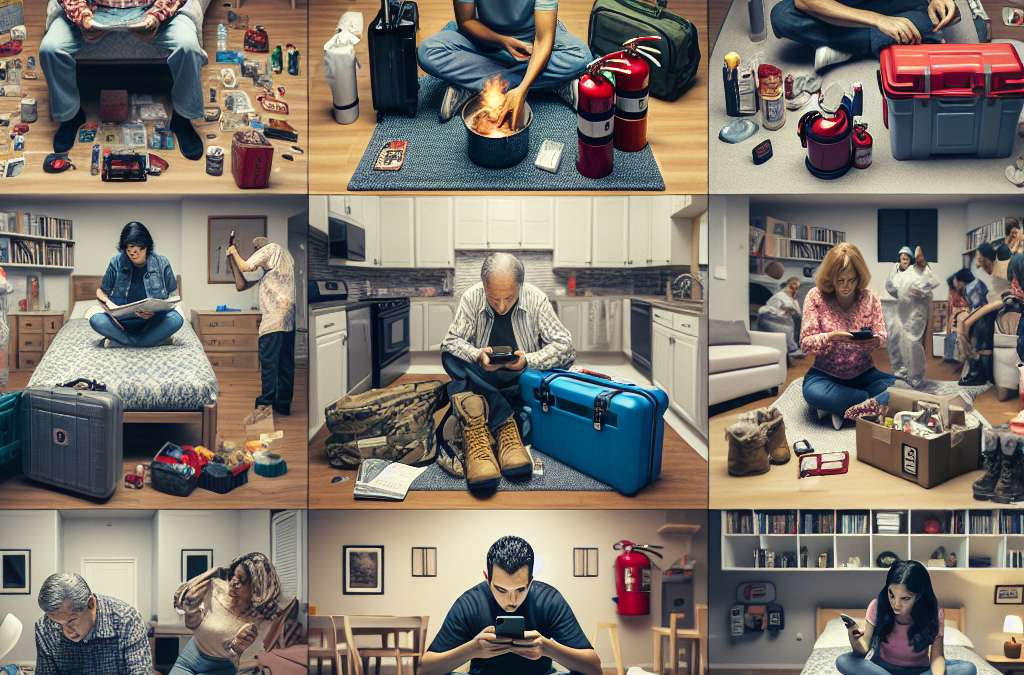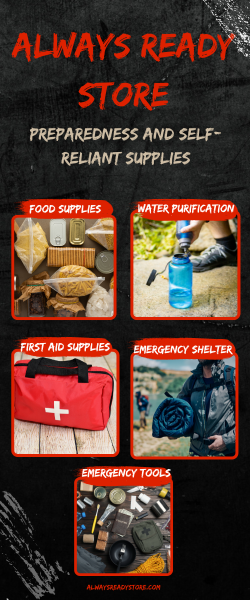Assessing Your Risks
Understanding Common Hazards
You know, living in an apartment can be pretty cozy, but it also comes with its own set of challenges when it comes to emergencies. For me, the first step in any preparedness plan is to recognize what hazards might actually pop up. Whether it’s a natural disaster like a fire, flood, or even a severe snowstorm, being aware of the potential risks you face in your area can go a long way in staying safe.
Take a moment to think about what could happen, based on your location. For instance, if you live in a flood-prone area, make sure to keep tabs on the weather. I’ve learned through my own experiences and chatting with neighbors that knowing these details can help you react quickly when trouble strikes.
Understanding your building’s emergency protocol is also crucial. Each place might have different rules when it comes to evacuations or sheltering in place. Ask your landlord or management to provide you with this information; it could be a lifesaver!
Creating a Personal Risk Plan
Once you’ve got a grip on the risks, it’s time to make a plan tailored just for you and your apartment. Think about how you’ll respond to different scenarios. Ask yourself questions like: “What will I do if there’s a fire?” or “How can I safely exit during an earthquake?” This kind of mindset sets you up for success.
Having a designated escape route is essential. In my experience, walking through these routes a few times, preferably during calm moments, really helps me remember my paths under pressure. And don’t forget to share this plan with anyone you live with so everyone knows what to do!
Additionally, consider specific accommodations for any family members who may need extra help, like kids or elderly folks. You never know what type of situation you might face, so being prepared for everyone can provide peace of mind.
Thank you for reading this post, don't forget to subscribe NOW for FREE!
Regularly Review and Update Your Plan
Just because you’ve made a plan doesn’t mean you can set it and forget it. Trust me, living a busy life often leads me to forget these important details, but I’ve learned the hard way that revisiting and updating my plan is key. Seasonal changes may bring new risks, so keep that in mind!
Schedule regular reviews of your plan. You might find that new neighbors or changes in your building’s structure could impact your safety. Include a periodic check at the beginning of every season in your calendar. That way, you won’t forget!
An additional tip here – involve your neighbors! Sharing your experiences and updates can foster a sense of community, and who knows, you might spark a group initiative that benefits everyone!
Building Emergency Kits
Choosing Essential Items
Okay, so you’ve assessed your risks and made a plan. Next up? Building an emergency kit! This might sound overwhelming, but trust me, you don’t need to go overboard. Start with the basics: water, non-perishable food, first aid supplies, and personal hygiene items. I found that having a backpack as a designated emergency bag makes it easier to grab and go!
This part can be both fun and practical. I like to customize my kit according to my specific needs. For example, I throw in my favorite snacks, extra medications, or a cozy blanket — anything that can make a tough situation a bit more bearable.
Don’t forget about important documents! Having copies of identification, insurance info, and medical records can be crucial during or after an emergency. I always keep these documents in a waterproof folder in my kit!
Storing Your Kit Safely
Where you store your kit is almost as important as what goes into it. I recommend finding a cool, dry place that’s easy to access. My kit is in a closet near the front door so I can grab it quickly when I leave in a hurry. You never know when you’ll need it!
Keep track of your kit’s items and expiration dates. I like to go through mine every six months and replace anything that might be getting outdated. It’s a small, simple step but can make a world of difference in an emergency.
Encourage anyone you live with to know where the kit is and what’s inside it — it could save them precious time in a chaotic situation!
Personalizing Your Kit for Unique Situations
As I mentioned earlier, it’s important to customize your kit. Think about your hobbies or lifestyle. Do you have pets? Make sure to include pet food, medications, and carriers for them too. You’d be surprised at how easy it is to forget furry family members!
If you enjoy camping, you might already have some useful gear. Consider adding a flashlight or multi-tool, which can be super handy during emergencies. Remember, your readiness kit should reflect your personal needs.
If you have kids, including some games or comforting items may help ease their anxieties in stressful situations. I always pack little toys or books for my nieces when they visit; it gives everyone a sense of comfort when the unexpected occurs.
Communication Strategies
Creating a Contact List
Communication is so vital during emergencies. I highly recommend creating an emergency contact list that includes both local and out-of-town family and friends. It’s a great way to ensure that if one method fails, you still have backup options.
List people who can check on you and vice versa, especially if you have family in different areas. This way, you don’t have to panic about finding out if everyone is okay. A quick text or call can do wonders!
Consider using social media or messaging apps as part of your communication plan, especially if traditional phone lines are down. I’ve found this to be efficient for tagging family in posts to alert them of our situation!
Establishing Meeting Points
If an emergency occurs and you can’t reach each other by phone, you’ll need to have an established meeting point. It could be a nearby park, a neighbor’s place, or any identifiable landmark. I like to choose spots that everyone knows about, as there’s less room for confusion.
Make sure to discuss these points with your loved ones in advance. You might also want to take a few different routes to get to your chosen location — exposing them to various scenarios can really help!
Always double-check these points regularly. I re-confirm my meeting places whenever I have family over or someone new joins our group; it keeps everyone in the loop!
Staying Connected with Neighbors
We often overlook the importance of connecting with our neighbors, but it’s super essential. Building relationships can foster a sense of community and means there’s someone looking out for you. If you ever need help, they’re first responders even before any official aid can arrive!
Consider starting or joining a neighborhood watch or community group. This can help everyone share resources, advice, and even skills that are incredibly helpful during emergencies. Personally, being involved has opened my eyes to lots of safety tips I hadn’t thought of before!
Regularly check in with your neighbors and be available for them to reach out. You never know when a little friendly chat can morph into a life-saving collaboration.
Practicing Your Emergency Plans
Conducting Drills
Alright, time to put your plan into action! Conducting drills is a fantastic way to prepare yourself, and honestly, it can even be a fun activity. I try to gather my family or roommates about once a year to practice our escape routes.
These drills help me visualize the process and identify any areas that might need improvement. Plus, it’s a great opportunity to have some laughs and strengthen our camaraderie!
Document anything that seems confusing or difficult to manage during the drill so you can refine your plan further. Remember, the goal is to feel more confident when the real deal happens, not stressed out!
Incorporating Feedback
After you conduct drills, it’s super important to talk about how things went. Get feedback from everyone involved and make adjustments as needed. Perhaps someone found a new obstacle that could slow you down during a real emergency.
Think of it as an opportunity for improvement, rather than a failure. I find that being open to suggestions not only helps fine-tune our plans but also strengthens our bonds as a group.
Encouraging this sort of feedback builds trust and confidence among group members. The more everyone feels heard, the better they’ll execute the plan when the time comes!
Keeping Skills Fresh
Lastly, make sure to keep your skills fresh! Knowing how to use a fire extinguisher, perform CPR, or stop bleeding are essential skills. I try to refresh my CPR knowledge every couple of years by taking a course; it’s an excellent way to stay current.
Invite friends over for informational meet-ups where you can practice these essential skills together. You’d be amazed at how empowering it is to feel confident in your ability to help others when it counts!
Also, keep an eye on any community workshops. Local fire departments or hospitals often host safety training events, and attending these will only enhance your knowledge and keep your skills fresh!
FAQs
What should be in my emergency kit?
Your emergency kit should include essentials like water, non-perishable food, first aid supplies, medications, a flashlight, batteries, and copies of important documents. Customize it further based on your personal needs, like pet supplies or comfort items.
How often should I review my emergency plan?
It’s wise to review your emergency plan at least twice a year, but consider doing so every season. This helps to keep it fresh in your mind and ensures you’re prepared for any new risks that may arise over time.
Why is it important to involve neighbors in preparedness?
Your neighbors are often your first line of defense in an emergency. Building a community can enhance safety and ensure everyone has a support network in place. Plus, sharing resources and experiences can provide valuable insights!
How do I practice my emergency plan effectively?
Conduct regular drills with your family or roommates. Utilize your escape routes and encourage open dialogue afterwards to share feedback. This keeps your skills sharp and enhances teamwork!
What if I have special needs in my family?
It’s essential to tailor your emergency plan to cater to the unique needs of your family members. Discuss their specific requirements, ensure comprehension of their roles during emergencies, and consider their comfort items in your emergency kit.






